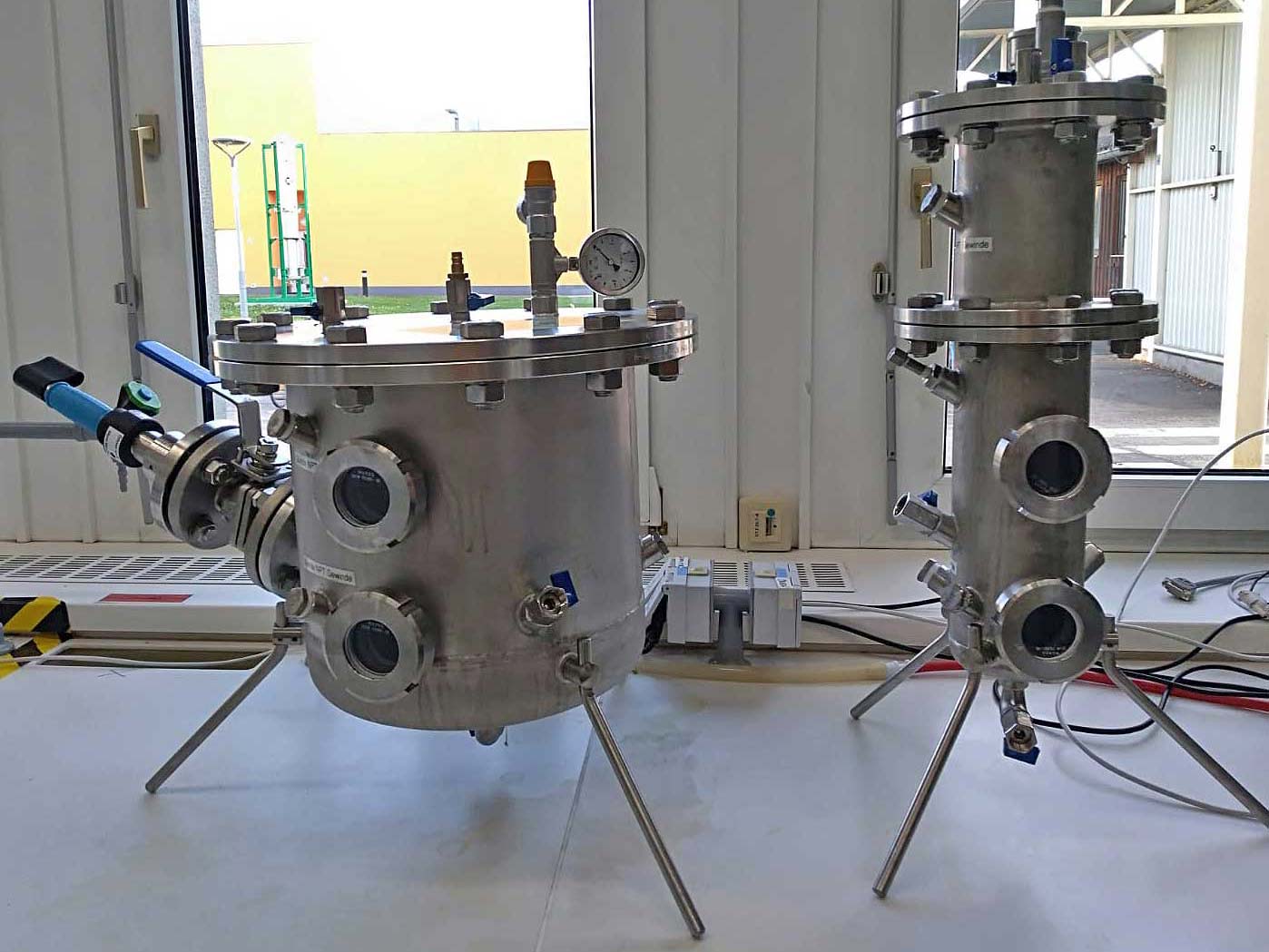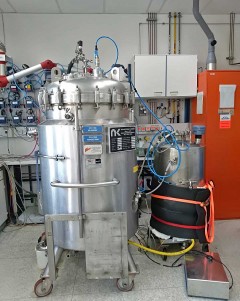Microbiological methanation is a method for producing methane with the help of highly specialised microorganisms. The required archaea1 can be obtained from the fermentation of biogas plants. In combination with an electrolysis plant, bio-methanation can be used as a complement to biogas plants. When there is too much electricity, hydrogen (H2) is produced in power-to-gas systems (P2G) by using electrolysis. Methanogenic archaea can then be employed in a microbiological process to convert CO2 and H2 to biomethane.
It is important for the production and utilisation of the renewable gas that the carbon dioxide used is free of the contaminants (O2 and N2). Oxygen is harmful to the anaerobic microorganisms and suppresses the process of methanation. Excessive levels of nitrogen reduce the caloric value of the biomethane. However, purification technologies for extracting pure CO2 are expensive and energy-intensive, making the concept uneconomical. In the ERA-Net project carbonATE, researchers and corporate partners from Austria and Switzerland are working under the direction of the University of Natural Resources and Life Sciences2 to develop a new, enzymatic CO2 separation process and to investigate the impacts of this process on the microbiological methanation.
Cost-saving and energy-efficient
The use of enzymes for the separation of CO2 is a way to obtain carbon dioxide from combustion gases and bind it in liquids inexpensively and with relatively little energy demand. The first usable enzymes were identified within the framework of the project, then cultivated through the fermentation of corresponding organisms, purified, and used for carbon dioxide binding. In the next step, the bound carbon dioxide is converted microbiologically into methane. The researchers will then investigate various methanogenic archaea and determine how the microorganisms can utilise the bound carbon dioxide. Different types of reactors are being tested at laboratory and pilot scales, along with optimisation of the assorted process systems.
The project team is pursuing two approaches to the research. Firstly, they are using pure cultures for the methanation. Secondly, they are using mixed cultures obtained from communi ties of anaerobic microorganisms containing a wide variety of different bacteria and archaea. The mixed cultures may offer advantages over pure cultures with regard to stability and conversion rates. Both approaches will be analysed and compared. The data will serve as the basis for a profitability analysis as well as a life cycle analysis, and the most economical variant will be pursued.
1 Archaea are unicellular organisms; together with bacteria and eukaryotes, they form one of the three domains into which all cellular organisms are divided.
2 Project partners: University of Natural Resources and Life Sciences, IFA Tulln, Institute for Environmental Biotechnology, BEST – Bioenergy and Sustainable Technologies GmbH (AT), EVM Energieversorgung Margarethen (AT), AAT Abwasser- und Abfalltechnik GmbH (AT), Zurich University of Applied Sciences, Institute of Chemistry and Biotechnology and Institute of Natural Resources Sciences (CH), Paul Scherer Institute (CH)

